#empress diamond pendant necklace.
Explore tagged Tumblr posts
Text


CATHERINE'S STYLE FILES - 2019
12 NOVEMBER 2019 || The Duchess of Cambridge attended Shout's Crisis Volunteer celebration event at Troubadour White City Theatre along with Prince William in London.
#british royal family#british royals#royalty#brf#royals#catherine middleton#kate middleton#royal#duchess of cambridge#british royalty#catherines style files#style files 2019#smythe.#joseph.#zara.#gianvito rossi.#mappin and webb.#empress diamond carraige earrings.#empress diamond pendant necklace.#princess of wales#the princess of wales#princess catherine#princess kate#royal fashion#fashion#style#lookbook#12112019#Shout19
18 notes
·
View notes
Text
The tiara's not worn yet from the late Queen's collection of favourites
via the court jeweller

Queen Alexandra’s Kokoshnik Tiara,
Perhaps the grandest of the three is Queen Alexandra’s Kokoshnik Tiara, which was given to her as a silver wedding anniversary present by a committee of aristocratic women in 1888. They asked her for input on the tiara’s design, and she pointed toward a classic diamond kokoshnik worn by her sister, the Empress of Russia

Vladimir Tiara
Queen Elizabeth II also inherited another tiara from Queen Mary: the versatile Vladimir Tiara, which was made for a Russian grand duchess in the 1870s. Mary bought it, along with its original pendant pearls, from Grand Duchess Vladimir’s descendants after the revolution, and she had it adjusted so that it could also be worn with drops from her grandmother’s Cambridge emerald collection.

Brazilian Aquamarine Tiara
The third and final unworn tiara from the late Queen’s collection of favorites is perhaps the most unique, and the one I’m most looking forward to seeing Queen Camilla wear. For her coronation in 1953, the people of Brazil offered Queen Elizabeth II a necklace and earrings set with diamonds and aquamarines. Four years later, the Queen commissioned Garrard to make a tiara to match the set, and as Brazil offered her more aquamarines over the years, the parure was expanded and the tiara was made larger.
119 notes
·
View notes
Text
Fourth and final part on Rhaenyra.
We conclude with jewellery, another prominent item in her wardrobe. Rhaenyra loves jewellery, much of which will have been a gift from her father Viserys, so in addition to her own personal glitz they have an important emotional connection.
Among her favourites are certainly tiaras and tiaras. As a youngster they were the highlight on loose hair, but even with braided hair they are no less. Oh yes, your eyes are not deceiving you: the second tiara has green stones! It is in fact a gift from Uncle Daemon, a tiara said to have belonged to the Empress of Leng. In my mind, Daemon intended to honour her by giving her a tiara in the colours of her Syrax, so yellow gold for the scales and green jade for the eyes. Oh, I guess Alicent won't have been too happy about that.


The rings are, however, among her favourites. Rhaenyra is used to wearing several, even one on each finger, if not more using rings for the phalanges. Favourite stones include rubies and obsidians, purple amethysts and black amethysts. There will be no lack of diamonds, stones surrounded by pearls and sapphires, with Arryn blue for his mother.


Dragons obviously predominate here too. Oh, how I love the necklace! It reminds me so much of a collar worn by Daenerys in Meereen. I even found it yellow, so I'd say perfect for Rhaenyra's Syrax. I also really like the earrings. Given the current standards I would even call them understated.


Especially when compared to the opulence of this necklace. The grandeur of the stones running down her chest, the metal chain around her neck *eyes like little hearts* This necklace would look divine on a red and black dress with a provocative neckline. The second is simpler, in some ways, a golden collar sprinkled with stones. If you wish, the pendants can be rubies and if you wish, the stones can cascade down and join a second necklace.


I end with these beautiful earrings and this pendant with amethysts, in perfect harmony with her eyes.


Unfortunately, my hopes of seeing such wonders on Rhaenyra are pretty slim, considering the austerity of her clothes. Well, we shall see... and judge!
Oh, yes: I have finished! It was fun to fantasize a bit and I hope you liked my ideas for Helaena, Alicent and Rhaenyra <3
I tried for all three of them to give prominent colours so that, as they are the three reigning female figures of the Dance of the Dragons, they can be distinguished visually. All three go through their own personal evolution, which I tried to do based on the books and the few pretty elements of the series, which the clothes try to tell. It was then a lot of fun to find possible elements of disagreement and union, such as the presence of blue for all three.
So I hope you enjoyed reading these reflections of mine! <3
44 notes
·
View notes
Text

From The Aberdare Times, 23rd April 1892:
A PRIMA DONNA'S JEWELS. Madame Adelina Patti's diamonds alone have been valued at £ 75,000. The Empress Eugnie gave her a comb set with 23 diamonds as a wedding present when she married the Marquis de Caux. A gift from Queen Victoria was a superb diamond locket. Baroness Burdett-Coutts once gave her an enormous single diamond set in a ring. The diva's wonderful set of sapphires was sold when she was obliged by French law to divide her fortune with her first husband. The Emperor of Russia was the donor of a pair of immense diamonds, set as earrings. The late Emperor William of Germany gave her a splendid diamond brooch, and the Emperor of Austria a bracelet of similar gems. Madame Patti possesses 23 diamond bracelets, and has also a necklace made of very large and fine emeralds. Her set of turquoises, mounted with diamonds, includes four pins, two bracelets; earrings, and a handsome pendant. Madame Christine Nilsson, Countess de Miranda, possesses some very magnificent jewels. After a concert at Buckingham Palace our Queen clasped upon the arm of the sweet singer a bracelet of fine diamonds and rubies. A wonderful Hungarian opal, glowing with rainbow fires, was given her by the Emperor of Austria. The Emperor of Russia presented her with a 'magnificent set of emeralds and diamonds at the same time as the Empress gave her an equally fine set of rubies, diamonds, and pears.
#classical music#opera#music history#bel canto#composer#classical composer#aria#classical studies#maestro#chest voice#Adelina Patti#The Queen of Song#The Queen of Diamonds#The Nightingale#Lyric coloratura soprano#soprano#classical musician#classical musicians#classical history#opera history#history of music#historian of music#musician#musicians#diva#prima donna#Marquis de Caux
2 notes
·
View notes
Text
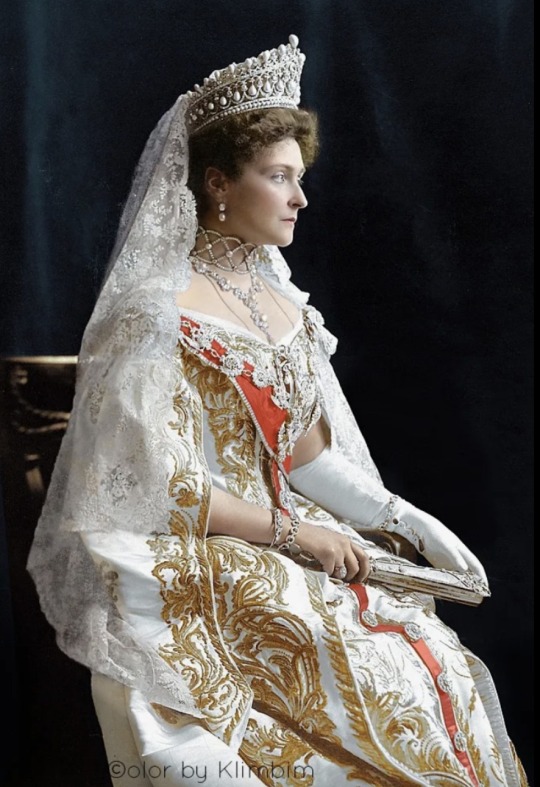

On the photographs: on the left - Alexandra Feodorovna wearing Crown jewels; on the right - a list of the personal jewels given by Alexandra Feodorovna in June 1917 to the Vault Department of the Cabinet, in Saint Petersburg.
Translation of the list presented on the photograph:
A list of jewels belonging to the Empress Alexandra Feodorovna, 1917. On the top of the list a text written in the handwriting of Marshal P.K. Benckendorff: ‘The list given to me by the Chamberlain Zannotti in June 1917 in Tsarskoe Selo. P. Be[nckendorff]. These items had been passed to the Vault Department of the Cabinet. Receipts at M.F. Geringer, B.’
Her Majesty’s Personal Jewellery in the box N 2
Sapphire and diamond necklace
Sapphire and diamond diadem
Sapphire and diamond bracelet
Big sapphire and diamond brooch
Big brooch with faceted sapphires
Big diamond brooch with a pendant – a big sapphire cabochon
Ruby and diamond necklace
Ruby and diamond broch
Big diamond brooch in the form of a rose
Emerald and diamond necklace
Emerald and diamond diadem
Emerald and diamond brooches (3)
Emerald and diamond big brooch
Emerald and diamond bracelet
Two diamond brooches
Pearl and diamond necklace
Separate
A fan with sapphires, rubies, and diamonds
A fan with the diamond coat of arms
A fan with an arrow made of diamonds
A fan of feathers with diamonds
Separate
A box with the jewels given by Emir of Bukhara
translated by Seraphima Bogomolova
The above information presented in support of the article: Part One: 'Like Kings and Queens, Like Princes and Princesses'
#Romanovs#Nicolas II#investigation#June 1917#research#evidence#jewellery#Saint Petersburg#Benckendorff#Alexandra Feodorovna#murder mystery#seraphima bogomolova
4 notes
·
View notes
Text
For My Darling Daughter
Words could not express the joy Xiwangmu felt reuniting with her daughter; each moment they spent with one another filled her heart with pure happiness. Such a deeply intimate feeling of love and affection for her child brought with it another meaningful gift on this day. So when Davina arrived at the Golden Palace on the day of the feast, the empress pulled her daughter aside for a private moment in her office where she presented the young woman with a box adorned with deep red silk and fastened with golden knots.
Xiwangmu then explained the contents had been created by Tsukuyomi, an original work of art by the Japanese god of the moon himself. Within the box, a beautiful necklace of tear-shaped pendants studded with diamonds, radiating with an ethereal resplendence reminiscent of stars as though they had been plucked from the night sky. She explained as the divine jeweler had to her, that the necklace was inspired by traditional carp streamers that celebrate the happiness of children. The teardrops can represent scales in a more explicit context, but also the teardrops of a tender, loving mother; tears of joy when a child is born and tears of sadness and worry when a child falls ill or is in distress. She did hope her daughter liked the gift and that, perhaps, Davina may someday pass it on to her own daughter as a new family heirloom.
-----------------------
Davina had brought a larger clutch than she had planned as she decided it was best to bring her mother’s present to give before the feast. She knew her mother had been busy between preparing for the feast, her role as director, and all she had done for the island to prepare for such a lovely holiday. So, while she knew her mother would never find her a burden, Davina had not wanted to add another added task onto the goddess’s heavy plate.
So when her mother wanted some time in private, she was thrilled. It would be the perfect moment. However, she had not even stopped to think that the goddess would have something for her. The dutiful daughter listened to her mother’s explanation as she opened the box. What a beautiful necklace! Her mother had definitely went above and beyond, and the meaning behind it threatened to pull tears in the corners of her eyes. This was the type of affection she had craved so desperately for. Clutching it tightly, she took a deep breath of air to stabilize her emotions. She had spent way too much time making herself look pretty for her mother’s event. With care, Davina leaned toward her mother, pressing a kiss on the other’s cheek. Despite her crimson red lips, that tint was going no where.
“Thank you so much, momma.” She said, fully of genuine gratitude. It was the best gift she could have asked for. Looking over it once more, a sudden thought came to mind, gasping softly. Davina forgot that quick she too wanted to get her mother a gift, and quick fingers stumbled to open the clasps of her clutch that hung on her hip. It was nothing to compare to what her mother gave her, but it still had a meaning too.
So, Davina handed over a beautiful embroidered phone case bag that held jade amulet of a phoenix that connected with the dragon amulet that she had attached to her purse and would ultimately add as a staple in her daily wear. Dragon, her year of the zodiac. And her mother, regal with the strength and power like that of a phoenix. Together, they would live in harmony. Two sides of one whole heart. But, Davina was not elegant enough to explain it to her mother, especially with already being emotional from their gift.
Instead, Davina could only speak one valid fact. “I love you, ma. Like lots and lots.”
2 notes
·
View notes
Link
Check out this listing I just added to my Poshmark closet: 18k Gold Major Arcana Tarot Pendant Necklace.
0 notes
Text
The Most Iconic Diamond Necklaces in History
Introduction
Diamond necklaces have long been symbols of luxury, power, and timeless beauty. From Hollywood legends to royalty, these dazzling pieces have adorned some of the most influential figures in history. While these iconic necklaces are often associated with wealth and extravagance, they can inspire beautiful designs, even for those seeking more affordable jewelry options, such as affordable rings. Let’s take a journey through history to explore the most famous diamond necklaces and how their legacy influences modern jewelry design.
1. The “Heart of the Ocean” Necklace
History and Legacy The “Heart of the Ocean” is perhaps one of the most famous diamond necklaces, popularized by the movie Titanic. Though the necklace in the film was fictional, it was inspired by the Hope Diamond, a 45.52-carat blue diamond known for its striking beauty and storied past.
Inspiration for Affordable Rings The allure of the “Heart of the Ocean” can be captured in affordable rings by using blue gemstones like sapphires or aquamarines set in intricate designs, offering a touch of regal elegance without the hefty price tag.
2. The Napoleon Diamond Necklace
History and Legacy Gifted by Emperor Napoleon Bonaparte to Empress Marie-Louise, this magnificent necklace features 234 diamonds, totaling 263 carats. It remains one of the most celebrated pieces of jewelry in history, symbolizing power and prestige.
Inspiration for Affordable Rings The grandeur of the Napoleon Diamond Necklace can inspire affordable rings with cluster settings or multiple smaller stones arranged in ornate designs, creating a luxurious feel without the exorbitant cost.
3. The Maharaja of Patiala Necklace
History and Legacy Commissioned by the Maharaja of Patiala in 1928, this necklace was one of the most extravagant ever created, featuring 2,930 diamonds, including the famous 234.65-carat De Beers diamond. The necklace symbolized the opulence of Indian royalty.
Inspiration for Affordable Rings To capture the spirit of the Patiala Necklace, look for affordable rings with bold, oversized center stones or intricate detailing that mimics the elaborate craftsmanship of the original piece.
4. The Tiffany Diamond Necklace
History and Legacy The Tiffany Diamond, a 128.54-carat yellow diamond, has been worn by only a few women, including Audrey Hepburn and Beyoncé. It’s a symbol of the enduring elegance and innovation of the Tiffany & Co. brand.
Inspiration for Affordable Rings Yellow gemstones like citrine or yellow sapphire can be used in affordable rings to echo the vibrant, sunny hue of the Tiffany Diamond, offering a cheerful yet sophisticated alternative.
5. The Queen’s Coronation Necklace
History and Legacy Worn by Queen Elizabeth II during her coronation in 1953, this necklace features 25 graduated brilliant-cut diamonds, with a 22.48-carat pendant stone. It represents the enduring legacy of the British monarchy.
Inspiration for Affordable Rings The classic elegance of the Queen’s Coronation Necklace can inspire affordable rings with simple, solitaire designs, emphasizing the beauty of a single, well-cut stone.
How Iconic Necklaces Influence Modern Jewelry
These legendary necklaces serve as a source of inspiration for modern jewelry designers, who often draw from their grandeur and elegance when creating more accessible pieces. Whether it’s the bold colors, intricate designs, or the sheer brilliance of the diamonds, the essence of these iconic necklaces can be found in today’s jewelry, including affordable rings.
Making Iconic Style Affordable
You don’t need a royal budget to enjoy the beauty of diamond-inspired jewelry. Many affordable rings capture the essence of these historic necklaces by using alternative gemstones, creative settings, and high-quality materials that offer similar visual appeal at a fraction of the cost.
Choosing Your Style When selecting affordable rings, consider the elements that attract you to these iconic necklaces—whether it’s the color, the cut of the stones, or the overall design. Many jewelers offer customizable options that allow you to create a piece that reflects your personal style while staying within your budget.
Conclusion
The most iconic diamond necklaces in history have not only dazzled the world with their beauty but also inspired countless jewelry designs that are accessible to everyone. By drawing inspiration from these legendary pieces, you can find or create affordable rings that carry the same elegance and sophistication, proving that true style is timeless.
0 notes
Text






























Pearl Sunburst Tiara | Empress Michiko’s Diamond Necklace | Chrysanthemum Earrings | Pearl Sautoir | Diamond Pendant | Japanese Imperial Tiaras
0 notes
Text
The Timeless Splendor of Necklaces: A Journey Through History and Fashion
Necklaces have long been adored as signs of beauty, sophistication, and also sentiment. These types of beautiful pieces of jewelry have adorned the necks of queens, empresses, and also everyday individuals for thousands of years. Past their aesthetic appeal, necklaces have also played a major part in revealing cultural identity and personal style. In this article, we will take a captivating quest through the past and development of necklaces, exploring their social importance, design innovations, and enduring elegance.
The Ancient Origins
The origins of necklaces could be traced back to early civilizations. In ancient Egypt, for instance, women and men alike wore delicate necklaces made from materials like gold, precious gems, as well as shells. All these necklaces often featured amulets or charms, thought to possess protective or religious qualities. In ancient Rome, necklaces were actually signs of wealth and also status, with complex designs crafted from a variety of precious metals. Know more in detail about Traditional Hair Accessories.

Social Importance
All through history, necklaces have held deep social significance. In many cultures, necklaces have been worn as amulets to avert bad spirits or to represent safety as well as good fortune. For instance, the well-known "Eye of Horus" pendant in ancient Egypt was believed to safeguard the wearer from harm. In Hinduism, the mangalsutra necklace signifies a woman's marital status and is a fundamental part of wedding events. Moreover, Native American tribes made sophisticated beadwork necklaces to tell stories and also show tribal identity.
The Renaissance to the Victorian Era
In the Renaissance, necklaces experienced a revival in European countries. Intricate pearl as well as gemstone necklaces adorned the necks of aristocrats and were often depicted in the era's famous artwork. In the Victorian period, sentimentality had been a substantial theme in jewellery design. Lockets and pendants on necklaces became widely used, allowing men and women to carry precious keepsakes or miniature portraits of loved ones close to their hearts.
Art Nouveau and Art Deco
The late 19th and early 20th centuries saw the emergence of two influential art movements: Art Nouveau and Art Deco. These movements had a significant impact on necklace design. Art Nouveau necklaces were characterized by sweeping, natural shapes influenced naturally, showcasing sophisticated enameling and also the use of materials like opals and moonstones. In contrast, Art Deco necklaces embraced geometric designs, symmetry, and the use of attractive coloured gem stones.
The Modern Age
The 20th century brought a shift towards a lot more diverse and experimental necklace designs. The mid-century saw the rise of costume jewelry, with daring statement necklaces made from cost-effective materials. The 1960s and 1970s witnessed a resurgence of bohemian designs, along with beaded as well as layered necklaces becoming trendy. Know more in detail about Tribal Necklace.

Contemporary necklaces are a proof of innovation and also versatility. From minimalist pieces that emphasize clean lines and also simplicity to lavish necklaces dripping with diamonds, you will find a necklace for each and every style and occasion nowadays. Moreover, designers are increasingly using sustainable materials as well as ethical techniques in creating these kinds of items, aligning with modern beliefs.
The actual Enduring Charm
Despite the ever-changing scenery of fashion, necklaces have maintained their appeal. They continue being a means of self-expression, symbolizing love, faith, as well as personal identity. Whether it's a delicate pendant passed down through generations or a strong statement piece acquired for a special event, necklaces hold sentimental value that transcends trends.
Summary
In the world of fashion and jewelry, necklaces stand as classic symbols of beauty and symbolism. From their ancient origins steeped in ethnic importance to the ever-evolving designs of the modern era, necklaces have woven themselves in to the tapestry of human history, a testament to our long lasting fascination with adornment as well as expression.
0 notes
Text
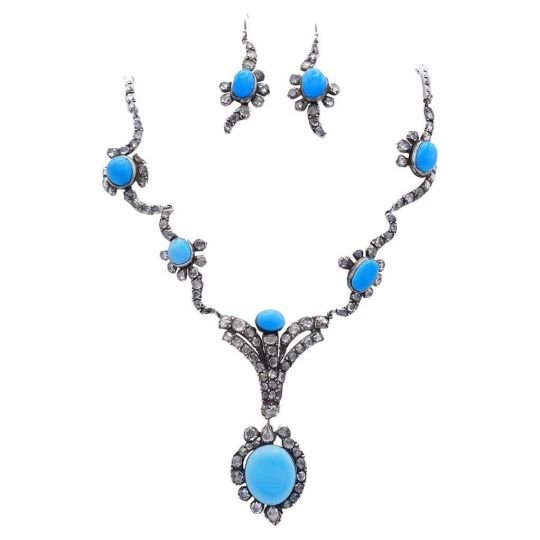
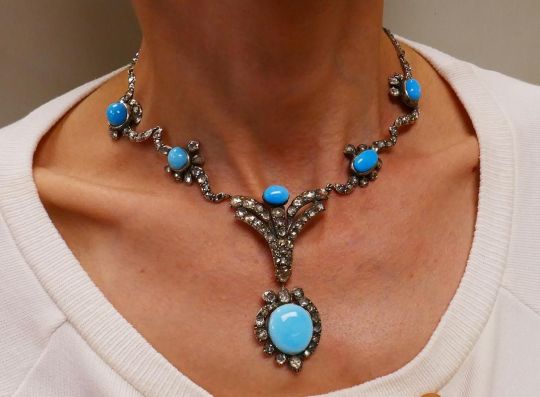
Antique Victorian Persian Turquoise Necklace Earrings Set Diamond Silver
A gorgeous antique set featuring Persian turquoise and rose cut diamond staged in silver. The Victorian set is consisted of a necklace and earrings. The Victorian dangling earrings have floral design and are equipped with a hook closure. Rose cut diamonds add a subtle sparkle while the turquoise splashes an amazing color. The Victorian necklace is comprised of six smaller turquoises with a large one hanging in the middle. All the stones have a lovely, clean baby blue color. This antique set looks delicate and very feminine with the diamond “petals” creating a great icy effect. The workmanship of the set is outstanding. The curved elements are thoughtfully mixed with the bar parts. All the features of the necklace are connected skillfully, and it sits perfectly on a neck. This antique Victorian set is made of silver and features eight oval cabochon Persian turquoise and rose cut diamonds. Measurements: 14 ½” x 1/8". The flower parts 5/8” x ¾”. The pendant part 2 7/8" x 1". The largest turquoise 5/8” x ¾” (2 x 1.7 cm), the other turquoise from ½” x 3/8” (1.3 x 1 cm) to 3/8” x ¼” (1 x 0.8 cm). The earrings 2” x ¾” (5 x 2 cm) with the hook. The weight is 75.9 grams. Did you know that in 17th century wearing turquoise jewelry was a must for a well-dressed gentleman? The stone was popular to the point when all of the emeralds in the crown that Napoleon I gave Empress Marie Louise were replaced with Persian turquoise cabochons. Today Persian turquoise is beloved by jewelry aficionados for its warm, calming color. It may vary from sky-blue to green. As to the dark veins, it depends on your preferences and a certain piece. Some jewelry collectors prefer turquoise with web pattern of matrix as it adds character to a piece. The name “turquoise” came from the "pierre tourques" that translates as a “Turkish stone.” The mineral was first transported to the west through Turkey from mines in the historical Khorasan province of Iran (Persia) and Afghanistan. Pre-Columbian Native Americans mined the stone throughout nowadays. In all these cultures turquoise was considered as a protective stone for warriors and symbolized the connection to the heaven.
Details Metal Silver Stone Turquoise,Diamond Stone Cut Mixed Cut Weight 75.9 g
Dimensions Width: 0.75 in (19.05 mm)Length: 14.5 in (368.3 mm) Place of Origin Unknown Period Early 20th Century Date of Manufacture 1900s Condition GoodWear consistent with age and use.
0 notes
Text
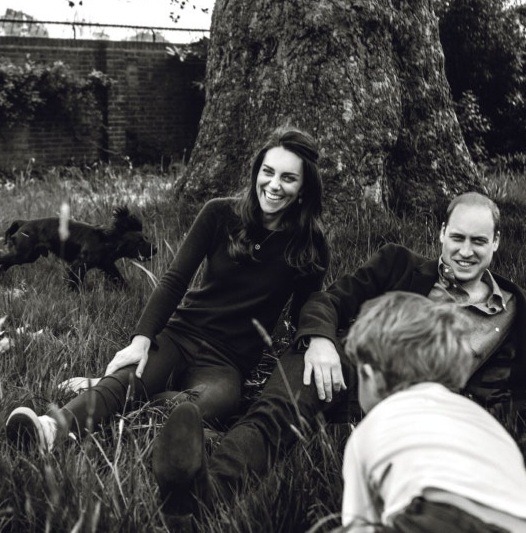
CATHERINE'S STYLE FILES - 2017
29 MAY 2017 || British GQ released portraits featuring the Duchess of Cambridge with her kids and husband as part of their interview and spread with Prince William.
#princess of wales#the peincess of wales#princess catherine#catherines style files#style files 2017#mine.#british royal family#royalty#british royals#royals#brf#kate middleton#catherine middleton#royal#duchess of cambridge#british royalty#prince of wales#the prince of wales#prince william#29052017#gq magazine 17#j crew.#mappin & webb.#mappin and webb.#empress pendant necklace.#empress diamond carraige earrings.#lupo cambridge#superga.#royal fashion#fashion
114 notes
·
View notes
Text
Monthly Jewels: May || Emerald
The Godman Necklace
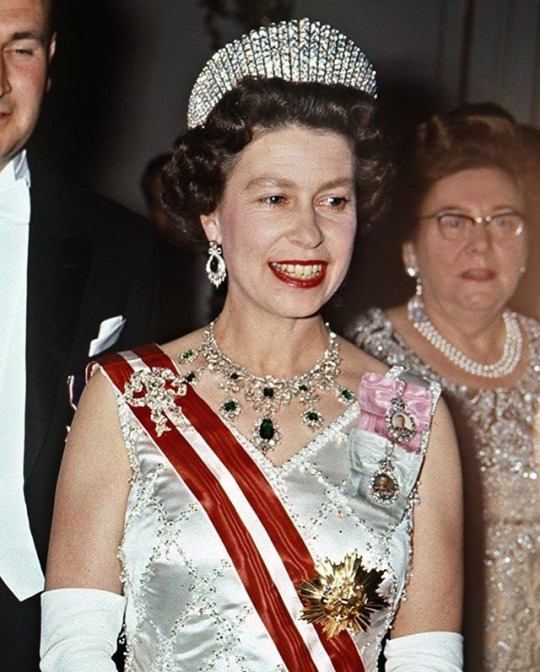
In 1965, a pair of elderly sisters, the Godmans, approached Buckingham Palace and told them that they had a piece of jewelry that the Queen might be interested in. According to Leslie Field in The Queen’s Jewels, they believed that a diamond and emerald necklace that they’d inherited from their father, British Museum trustee Frederick McCann Godman, had connections to Empress Joséphine of France.
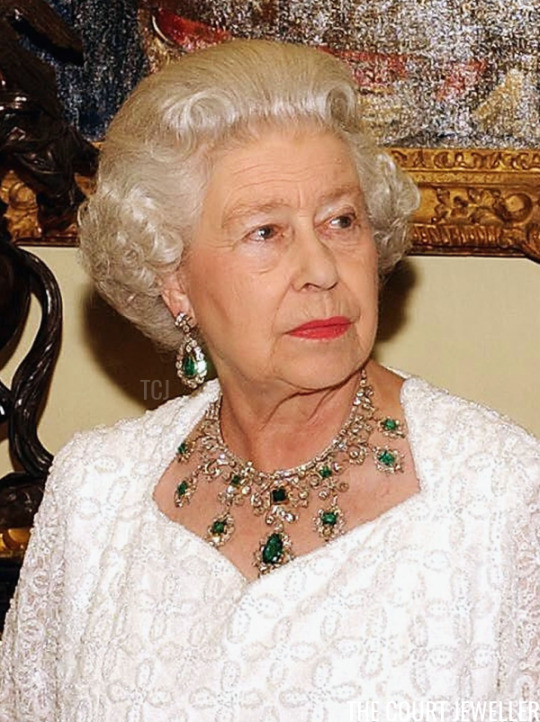
The palace did a bit of digging about the Godmans’ necklace, and unfortunately, it was determined that the piece didn’t come from Empress Joséphine or the Leuchtenbergs at all. Regardless, it’s an extremely beautiful nineteenth-century necklace, and the sisters asked if the Queen would still like to have the piece. It’s rare that the royals accept such extravagant gifts from the public, but as in the case of the Queen Mother and the Greville inheritance, this time the Queen accepted.
~ The Court Jeweller
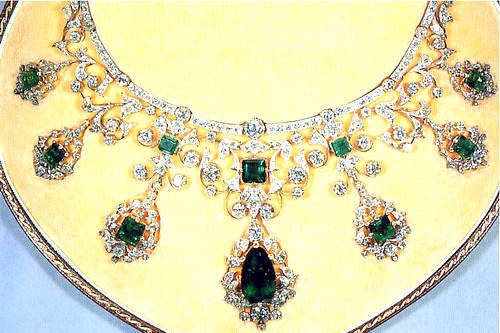
The necklace which is a delicate ornamental work in platinum, is encrusted with diamonds and emeralds. The design used on the necklace is based on symmetrical flower motifs, a style that was common for jewelry crafting throughout the 19th century, a naturalistic style that used the “language of flowers.”
The thick circular band of the necklace is encrusted with diamond baguettes interspersed with round brilliant-cut diamonds. Seven floral motifs arise from the lower side of this band, which take the form of seven pendants. The largest of this floral pendant is situated along the median line of the necklace, and is encrusted with two large emeralds, a rectangular-shaped smaller emerald at the base, and an elongated oval or drop-shaped emerald in the center of the pendant, which is the largest emerald in the necklace.
#the godman necklace#monthly jewels#british royal family#queen elizabeth ii#jewel;necklace#thejewelcatalogue#source;thecourtjeweller
40 notes
·
View notes
Photo

Mappin & Webb Empress Mini Diamond Pendant ♕ The Princess of Wales
#catherine middleton#Catherine Duchess of Cambridge#kate middleton#duchess of cambridge#mappin & webb#empress mini diamond pendant#diamond necklace#Diamond Jewelry#royal jewels#british royal jewels#british royal family#windsor royal family#windsors#house of windsor#windsor#royal windsor family#Windsor Royal Jewels#Princess of Wales#Catherine Princess of Wales
154 notes
·
View notes
Text
Crown Princess Märtha & the Leuchtenberg Emerald Parure

I got an ask from @redrosecut about the scene in Atlantic Crossing where Crown Princess Märtha is given an emerald tiara by her mother, Princess Ingeborg, to sell if she needed to. Sorry, Tumblr ate the ask so I had to start from scratch.

While people are upset about some of the creative liberties taken in Atlantic Crossing this part actually did happen. In 1940, the Nazis invaded Norway so the government evacuated Crown Princess Märtha and her three children to Sweden and then to the United States. Märtha was a Swedish princess by birth and stayed with her family there but some people were not happy with the Crown Princess of Norway taking refuge in Sweden because it put their neutrality at risk. Her family wanted her to stay but she decided to go to the US during the war. Her mother, Princess Ingeborg, gave her the tiara and the rest of the parure wrapped in a scarf at Stockholm Central Station and told her to sell it if she needed money to support her family. Thankfully, Märtha and her children were able to safely return to Norway in 1945 and she didn’t have to sell the parure. It’s still worn today by Märtha’s daughter-in-law, Queen Sonja of Norway, and is probably her most worn tiara or at least it’s the one I most associate with her.

The Leuchtenberg Emerald Parure Tiara was most likely a wedding present to Princess Augusta, Duchess of Leuchtenberg, from her husband’s stepfather, Emperor Napoleon, in 1806 and if it’s not from them then it from around that time. The parure traveled to Brazil with Empress Amélie and then to her sister, Queen Josephine of Sweden. It descended through the family until it was given to Princess Ingeborg of Sweden, the mother of Crown Princess Märtha of Norway, Queen Astrid of Belgium, and Princess Margaretha of Denmark. She was the sibling, parent, grandparent, or cousin of basically all the Scandinavian royals and some of the non-Scandi ones too so she was at all of the big events and was very generous with loaning out her jewelry which I appreciate. I’ve been updating my Scandinavian tiara posts recently so I’ve seen a lot of Ingeborg and there’s a few more of her tiaras coming up if you are someone that follows my regular site. Ingeborg did make some controversial changes to the parure because by the time it got to her it did not have any earrings so she had the pear shaped emerald right next to the big rectangular center emerald on the tiara removed to make some. You can see that they are still in place in the pictures of her below but in the pictures of Märtha above they have been replaced with diamond palmettes and she wearing the pear emeralds as earrings. The Leuchtenberg Sapphire Parure also from Augusta that’s still in Sweden had missing earrings too and some were later created from hairpins. The theory is that neither Queen Sophia or Queen Victoria of Sweden wore earrings so they gave them away or had them made into other jewelry. The change certainly makes the big central emerald stand out more which most people don’t like and thinks that make the tiara look less balanced. There also used to be seven pendants on the necklace (Queen Sonja is wearing one of them above right) that she distributed among her children. The ones that went to Queen Astrid were eventually used to make Grand Duchess Joséphine Charoltte of Luxembourg’s Emerald Peacock Tiara.

I first read the story about the emeralds on Trond Norén Isaksen’s website. He’s a Norwegian royal historian and presumably Princess Astrid, Crown Princess Märtha’s daughter, told it to him when he was interviewing her for her official biography. Then in 2011, Queen Silvia of Sweden also told it in the documentary about royal jewels, De Kongelige Juveler. The Norwegian royals declined participating in that documentary or Kungliga Smycken in 2020. They really are much more private about their jewels compared to the other Scandinavian monarchies but we luckily still know a lot because so much of their jewelry passed through Sweden or Denmark first. The bit about the tiara is at the 20 minute mark. Queen Silvia speaks in English but you can turn on the captions to get English for the narrator’s part.
youtube
#Tiara Talk#Crown Princess Martha#Norway#Norwegian Royal Family#Atlantic Crossing#tiaras on film#Queen Sonja#Princess Ingeborg#emerald#tiara
148 notes
·
View notes
Text
HM Queen Elisabeth I I wedding dress and jewelry .
For her wedding dress, Elizabeth still required ration coupons to buy the material for her gown, designed by Norman Hartnell. The dress was "a duchesse satin bridal gown with motifs of star lilies and orange blossoms." Elizabeth's wedding shoes were made out of satin and were trimmed with silver and seed pearl. Elizabeth did her own makeup for the wedding. Her wedding bouquet was prepared by the florist M. H. Longman, and consisted of "white orchids with a sprig of myrtle". The myrtle was taken from "the bush grown from the original myrtle in Queen Victoria's wedding bouquet". The bouquet was returned to the abbey the day after the service to be laid on the tomb of the Unknown Warrior, following a tradition started by Elizabeth's mother at her wedding in 1923
Prince Philip turned to his mother, Princess Alice of Battenburg, for help when creating the ring. She gave him her royal wedding tiara, The prince used a 3-carat diamond from the storied tiara to create the famous engagement ring for Elizabeth
Other diamonds from Alice’s dismantled tiara were also used to make Philip’s wedding present to his bride , an elaborate diamond and platinum bracelet also made by the jewelers at Philip Antrobus . The tiara had Romanov roots — it was Alice’s wedding gift from Emperor Nicholas II and Empress Alexandra of Russia — so both the Queen’s engagement ring and the Edinburgh Wedding Bracelet feature diamonds with Russian imperial heritage and was designed from the Prince himself.Today, the bracelet is worn by the Duchess of Cambridge.
Queen Mary had given the fringe tiara to her daughter-in-law, Queen Elizabeth (better known to us as the Queen Mother), in 1936. The Queen Mum is the one who loaned the tiara to Princess Elizabeth for her wedding in 1947. (Queen Elizabeth II didn’t inherit the tiara until her mother’s death in 2002.) There was a bit of an infamous mishap with the tiara on the wedding day: as the princess was getting ready, the tiara frame suddenly snapped. Garrard was able to repair it, but you can see a gap in the tiara from the quick fix in the portraits from the wedding.
Since 1947, the tiara has been worn by two more British royal brides. The Queen Mum loaned it to Princess Anne for her first wedding in 1973. Earlier this year, the Queen loaned the tiara to Princess Beatrice for her wedding as well
The Queen Anne and Queen Caroline Pearl Necklaces
Pearls are a staple in Queen Elizabeth II’s jewelry wardrobe today, so it’s no surprise that she wore a two-stranded pearl necklace on her wedding day. These pearls, though, are particularly special. They’re actually two separate pearl necklaces, always worn together, that have been in the family for generations. If family tradition is correct, they’re among the oldest pieces of British royal jewelry still worn by the Queen. The smaller strand, made of 46 pearls, is said to have been worn by Queen Anne, the last Stuart monarch. The longer strand, which includes 50 pearls, is attributed to Caroline of Ansbach, the queen consort of George II. Queen Victoria’s jewel inventory of 1896, made by Garrard, notes the pearl necklaces and is the first recorded statement of their Stuart/Hanoverian provenance
The Duchess of Gloucester’s Diamond and Pearl Earrings
Like the rest of the jewels worn by Princess Elizabeth on her wedding day, her diamond and pearl cluster earrings were also family heirlooms. The earrings date to the first half of the nineteenth century; they were originally owned by Princess Mary, Duchess of Gloucester, one of the daughters of King George III. She bequeathed them to her niece, Princess Mary, Duchess of Teck in 1857; in turn, the Duchess of Teck bequeathed them to her daughter, Queen Mary, in 1897. The earrings originally included detachable diamond and pearl pendants, but those were made into a separate pair of earrings by Queen Mary .
The cluster earrings were relatively new to Princess Elizabeth’s collection. Queen Mary had given them to her granddaughter less than a year earlier, in January 1947, on the day that the royal family left for their tour of South Africa
Νυφικό και κοσμήματα Της ΑΜ Βασίλισσας Ελισαβετ Β’
Για το νυφικό της, η Ελισάβετ χρειαζόταν ακόμα κουπόνια για να αγοράσει το υλικό για το νυφικό της, σχεδιασμένο από τον Norman Hartnell. Το φόρεμα ήταν «ένα σατέν νυφικό με μοτίβα από αστεράκια και άνθη πορτοκαλιάς». Τα νυφικά παπούτσια της Ελισάβετ ήταν φτιαγμένα από σατέν και ήταν διακοσμημένα με ασήμι και μαργαριτάρια. Η Ελισάβετ έκανε το δικό της μακιγιάζ για τον γάμο. Η γαμήλια ανθοδέσμη της ετοίμασε ο ανθοπώλης M. H. Longman, και αποτελούνταν από «λευκές ορχιδέες με ένα κλωνάρι μυρτιάς». Το κλωνάρι μυρτιάς ηταν από τ��ν αρχική μυρτιά που φυτεύτηκε για την γαμήλια ανθοδέσμη της Βασίλισσας Βικτώριας». Η ανθοδέσμη επιστράφηκε στο αβαείο την επομένη της λειτουργίας για να κατατεθεί στον τάφο του Άγνωστου Πολεμιστή, σύμφωνα με μια παράδοση που ξεκίνησε η μητέρα της Ελισάβετ στο γάμο της το 1923
Ο πρίγκιπας Φίλιππος στράφηκε στη μητέρα του, την πριγκίπισσα Αλίκη της Ελλάδας Δανίας και Μπατενμπεργκ , για βοήθεια για τη δημιουργία του δαχτυλιδιού. Η Πριγκίπισσα Αλικη Του έδωσε τη βασιλική γαμήλια τιάρα της ως γαμήλιο δώρο και έτσι ο πρίγκιπας χρησιμοποίησε ένα διαμάντι 3 καρατίων από την περίφημη τιάρα για να δημιουργήσει το διάσημο δαχτυλίδι αρραβώνων για την Ελισάβετ
Άλλα διαμάντια από την αποσυναρμολογημένη τιάρα της Αλίκης χρησιμοποιήθηκαν επίσης για να κάνει το γαμήλιο δώρο του Φίλιππου στη νύφη του, ένα περίτεχνο βραχιόλι από διαμάντια και πλατίνα, φτιαγμένο επίσης από τους κοσμηματοπώλες του Philip Antrobus. Η τιάρα είχε ρίζες απο τους Ρομανόφ διότι ήταν το γαμήλιο δώρο στην Αλίκη από τον αυτοκράτορα Νικόλαο Β' και την αυτοκράτειρα Αλεξάνδρα της Ρωσίας - έτσι τόσο το δαχτυλίδι αρραβώνων της Βασίλισσας όσο και το γαμήλιο βραχιόλι του Δούκα του Εδιμβούργου διαθέτουν διαμάντια με ρωσική αυτοκρατορική κληρονομιά και σχεδιάστηκαν από τον ίδιο τον Πρίγκιπα. Σήμερα, το βραχιόλι φοράει και η Δούκισσα του Κέμπριτζ Καθριν .
Η Βασίλισσα Μαίρη είχε δώσει την διαμαντενια τιάρα στη νύφη της, Βασίλισσα Ελισάβετ (γνωστή σε εμάς ως Βασίλισσα Μητέρα), το 1936. Η βασίλισσα μαμά είναι αυτή που δάνεισε την τιάρα στην πριγκίπισσα Ελισάβετ για τον γάμο της το 1947. (Η Βασίλισσα Ελισάβετ II δεν κληρονόμησε την τιάρα μέχρι τον θάνατο της μητέρας της το 2002.) Υπήρξε ένα περιβόητο ατύχημα με την τιάρα την ημέρα του γάμου: καθώς η πριγκίπισσα ετοιμαζόταν, το πλαίσιο της τιάρας έσπασε ξαφνικά. Ο Garrard μπόρεσε να το επισκευάσει, αλλά μπορείτε να δείτε ένα κενό στην τιάρα από τη γρήγορη επιδιόρθωση στα πορτρέτα του γάμου.
Από το 1947, η τιάρα φορέθηκε από δύο ακόμη βρετανικές βασιλικές νύφες. Η βασίλισσα μαμά το δάνεισε στην πριγκίπισσα Άννα για τον πρώτο της γάμο το 1973. Το 2020 η βασίλισσα δάνεισε την τιάρα στην εγγονή της πριγκίπισσα Βεατρίκη και για τον γάμο της
Τα μαργαριταρένια κολιέ της Βασιλισσας Αννας και Βασίλισσας Καρολίνας
Τα μαργαριτάρια είναι βασικό στοιχείο στη γκαρνταρόμπα κοσμημάτων της Βασίλισσας Ελισάβετ Β' σήμερα, επομένως δεν αποτελεί έκπληξη το γεγονός ότι φόρεσε ένα δίκλωνο μαργαριτάρι κολιέ την ημέρα του γάμου της. Αυτά τα μαργαριτάρια, όμως, είναι ιδιαίτερα ξεχωριστά. Στην πραγματικότητα είναι δύο ξεχωριστά μαργαριταρένια κολιέ, που φοριούνται πάντα μαζί, που υπάρχουν στην οικογένεια για γενιές. Αν η οικογενειακή παράδοση είναι σωστή, είναι από τα παλαιότερα βρετανικά βασιλικά κοσμήματα που φορούσε ακόμα η Βασίλισσα. Το μικρότερο κολιέ , φτιαγμένο από 46 μαργαριτάρια, λέγεται ότι φορέθηκε από τη βασίλισσα Άννα, την τελευταία μονάρχη των Στιούαρτ . Το μακρύτερο κολιέ , που περιλαμβάνει 50 μαργαριτάρια, αποδίδεται στην Καρολίνα του Άνσμπαχ, τη βασίλισσα σύζυγο του Γεωργίου Β'. Ο κατάλογος κοσμημάτων της Βασίλισσας Βικτώριας το 1896, που έγινε από τον Garrard, σημειώνει τα μαργαριταρένια περιδέραια και είναι η πρώτη καταγεγραμμένη δήλωση της προέλευσής τους από Stuart/Hanoverian
Τα σκουλαρίκια με διαμάντια και μαργαριτάρια της Δούκισσας του Γκλόστερ
Όπως και τα υπόλοιπα κοσμήματα που φορούσε η πριγκίπισσα Ελισάβετ την ημέρα του γάμου της, τα σκουλαρίκια της με διαμάντια και μαργαριτάρια ήταν επίσης οικογενειακά κειμήλια. Τα σκουλαρίκια χρονολογούνται στο πρώτο μισό του δέκατου ένατου αιώνα. ανήκαν αρχικά στην πριγκίπισσα Μαρία, Δούκισσα του Γκλόστερ, μία από τις κόρες του Βασιλιά Γεωργίου Γ'. Τα κληροδότησε στην ανιψιά της, πριγκίπισσα Μαρία, Δούκισσα του Τεκ το 1857. με τη σειρά της, η Δούκισσα του Τεκ τα κληροδότησε στην κόρη της, Βασίλισσα Μαρία, το 1897. Τα σκουλαρίκια αρχικά περιλάμβαναν αποσπώμενα μενταγιόν με διαμάντια και μαργαριτάρια, αλλά αυτά έγιναν ένα ξεχωριστό ζευγάρι σκουλαρίκια από τη Βασίλισσα Μαρία.
Τα σκουλαρίκια ήταν σχετικά νέα στη συλλογή της Πριγκίπισσας Ελισάβετ. Η βασίλισσα Μαρία τα είχε δώσει στην εγγονή της λιγότερο από ένα χρόνο νωρίτερα, τον Ιανουάριο του 1947, την ημέρα που η βασιλική οικογένεια έφυγε για την περιοδεία της στη Νότια Αφρική
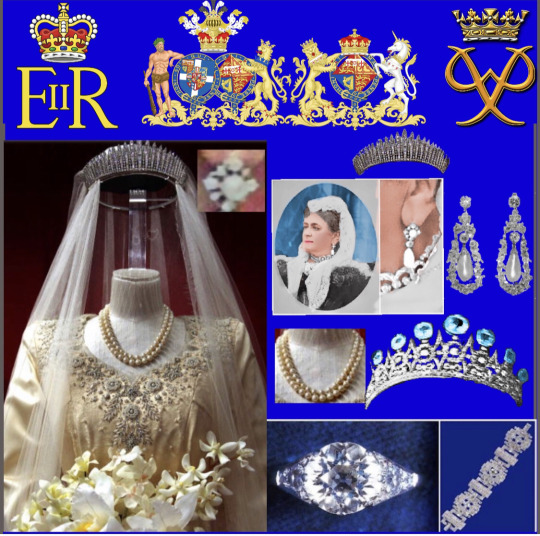

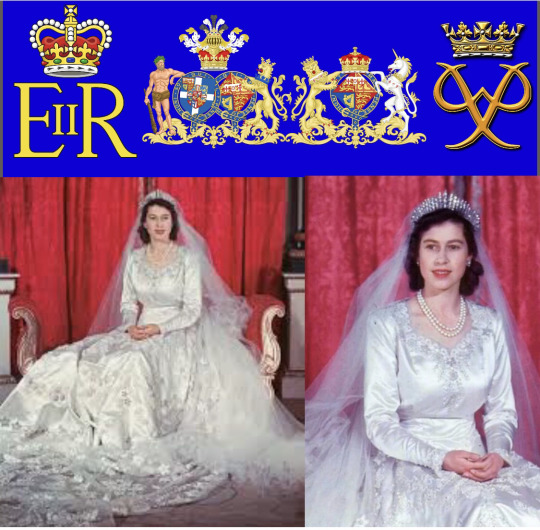

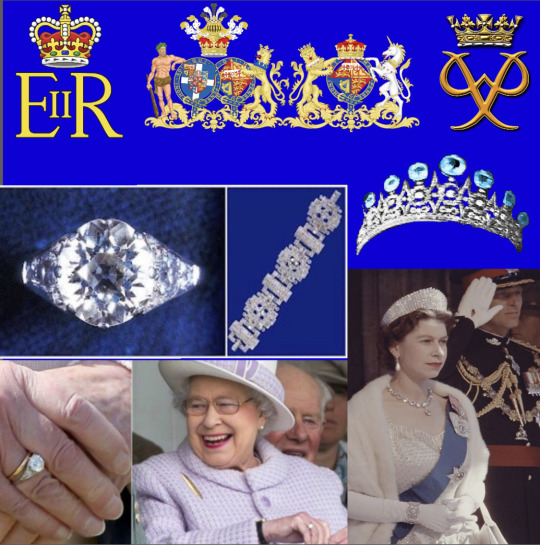
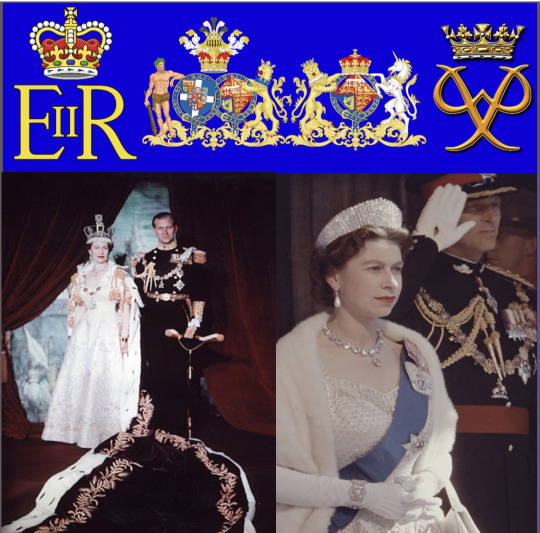
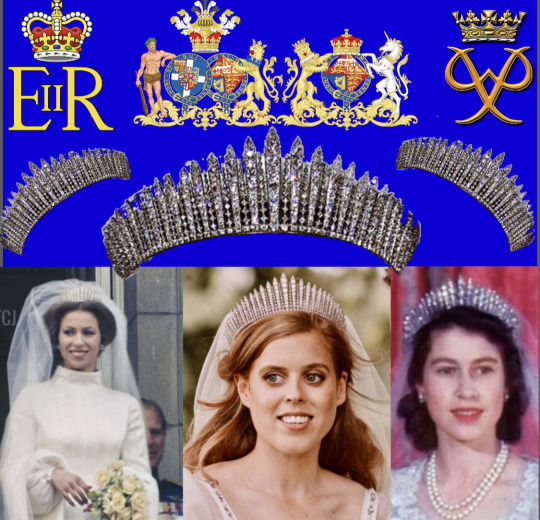

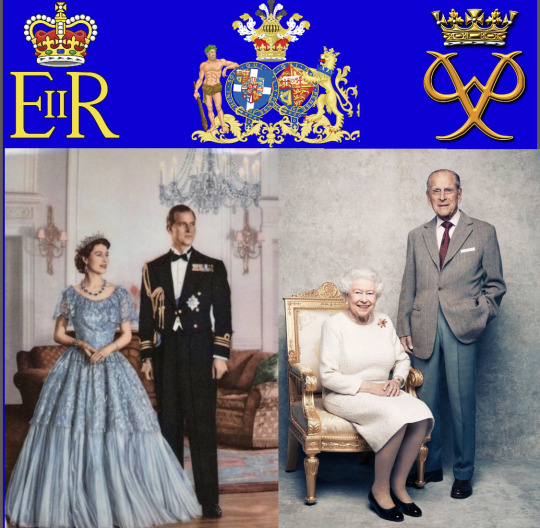
#kingconstantine#danishroyalfamily#crownprincepavlos#queenannemarie#greek royal family#house of romanov#greekroyals#crownprincessmariechantal#danishroyals#princeconstantinealexios#princess theodora#princessmarieolympia#princessalexia#princessnina#princesseirini#princesstatiana#princenikolaos#princeodyseaskimon#princearistidesstavros#princeachileasandreas
12 notes
·
View notes